This blog delves into compliance risk management (CRM) in banking, emphasizing its role in meeting regulatory standards and mitigating legal risks. It covers critical compliance risks, including AML/CFT violations, data privacy issues, and customer due diligence failures. A robust CRM framework is essential for ensuring adherence to regulations, protecting reputation, and avoiding penalties.
Money laundering has been rising globally despite the growing laws and regulations and clamping down from enforcement agencies. The annual laundered sum is a staggering 2-5% of global GDP ($800 billion – $ 2 trillion) as per the UNODC estimate.
While money laundering techniques grow more obscure, their exploitation of fiat and virtual currencies continues to baffle financial systems, aggravate terrorist financing, and impact the economic and geopolitical landscape.
Financial institutions need a deeper understanding of the red flags that indicate money laundering, terrorist financing, and other illicit transactions. More so due to the expanding ambit of red flags for new laundering techniques and typologies.
This blog outlines FATF red flag indicators for detecting money laundering and terrorist financing on account of virtual assets (VAs); however, these recommendations apply to fiat currencies as well.
FATF Red Flag Indicators of Money Laundering and Terrorist Financing
The red flags for suspicious activities relate to broad aspects, including transactions, transaction patterns, anonymity, senders and recipients, source of funds, and geographical parameters. FATF guidelines recommend deeper assessment and reporting of the perceived risks based on pertinent observations. Here is an outline:
1. Red Flags for Transactions
The FATF guidelines states, “Red flags traditionally associated with transactions involving more conventional means of payment remain relevant to detecting potential illicit activity related to VAs.” The foremost indicator is structured transactions or systematic transfers in smaller denominations, typically within the ceiling limits to evade detection and reporting of anomalies.
Abrupt and large transactions within 24 hours and irregular “one-off” transaction patterns within a longer timespan also indicate a red flag for illicit transactions based on VAs or traditional currency. Multiple, large transactions to a new account or a recently activated account also point to potentially illicit transactions.
2. Suspicious Transaction Patterns
A large deposit to open a new account might indicate a red flag, particularly when the amount doesn’t reconcile with the customer profile. In tandem, a customer that begins to trade a significant amount of the deposit on the same day or soon after or takes out the whole amount might draw a red flag.
Another notable pattern involves using multiple accounts to make transactions that deviate from the user’s standard behavior. For example, deposits from unrelated wallets or accounts to other accounts or exchanging virtual assets for fiat currency at a loss.
3. Red Flags Related to User Anonymity
Virtual assets inherently enable anonymity, which hampers the detection of illicit transactions associated with money laundering and terrorist financing. In the context of behavioral patterns and customer relationships, the factor of anonymity may trigger a red flag. For example, the use of multiple VAs by a customer despite additional fees or moving a virtual asset to an anonymity-enhanced cryptocurrency (AEC) should raise suspicion.
Transactions in virtual assets with exposure to known illicit sources like darknet marketplaces, gambling sites, Ponzi schemes, etc., also indicate potential money laundering.
4. Red Flags Related to Senders or Recipients
The FATF guidelines highlight specific irregularities related to account creation and customer due diligence or CDD. For example, a customer using different identities to open accounts to avoid restrictions or initiating transactions from non-trusted or flagged IPs or those from sanctioned jurisdictions raises a red flag. Within the same Virtual Asset Service Provider (VASP), repeated attempts to open an account also count as atypical behavior.
In the CDD process, multiple issues may trigger a red flag for money laundering and terrorist financing; incomplete or inadequate KYC data, declined requests for KYC documentation, and gaps and inaccuracies in the source of funds and sender-receiver relationship are some of these irregularities.
5. Source of Funds or Wealth
Many money laundering indicators emerge from tainted funding sources based on criminal activities such as narcotics trafficking, fraud, extortion, etc. Foremost is the use of tainted VA addresses and cards that associate with fraud, ransomware schemes, darknet, etc.
Drawing substantial funds or fiat currency through a debit or credit card linked to a VA wallet, followed by conversion to fiat currency also indicates a red flag. Schemes wherein the source or origin of funds remains unknown, with possible links to shell entities or incoming transactions from unknown sources also raise suspicion.
6. Geographical Indicators of Money Laundering
Geographical red flags are based on jurisdictional disparities in terms of AML/CFT regimes, implementation, reporting obligations, and preventive measures. Perpetrators exploit unintentional gaps in the regulatory frameworks to launder money as it moves through different jurisdictions.
One of the indicators is when the source or destination of funds is a VA exchange unregistered in the customer’s jurisdiction. Another scenario involves the use of a VA exchange in risky jurisdictions with insufficient AML/CFT regulations.
Setting up offices in an inadequately regulated jurisdiction, with no rational explanation also raises a red flag for suspicious financial activities.
Detecting Red Flags is Key to Supporting AML/CFT Regulations
The trail of red flags continues to grow in sync with emerging laws, regulations, and amendments that strive to curtail the money laundering menace. Being aware of the latest red flags is crucial for financial institutions to take the necessary measures for gaining regulatory alignment.
Anaptyss offers solutions such as domain-led consulting, implementation expertise, and training solutions to help institutions understand applicable red flags and act upon them.
Based on the Digital Knowledge Operations™ approach, Anaptyss’ financial crime compliance practice enables a realistic and tailored way to detect and address red flags.
Interested in learning more about the red flags for money laundering and ways to address them? Write to us: info@anaptyss.com.


















